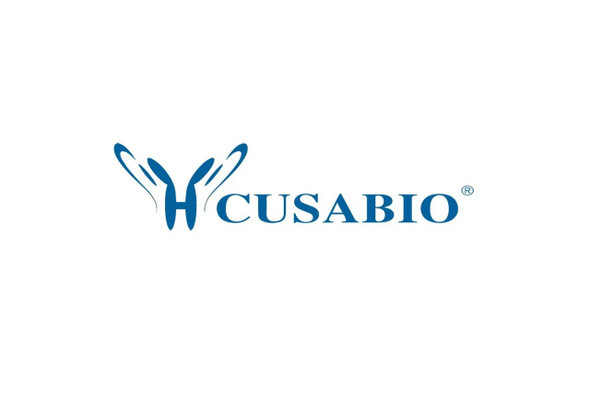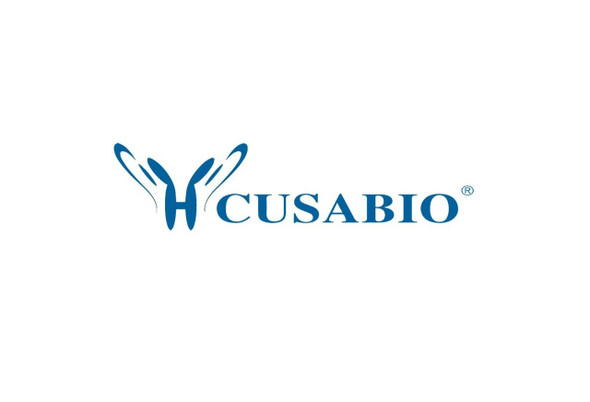Cusabio Human Recombinants
Recombinant Human Receptor-type tyrosine-protein phosphatase beta (PTPRB), partial | CSB-YP019048HU
- SKU:
- CSB-YP019048HU
- Availability:
- 3 - 7 Working Days
Description
Recombinant Human Receptor-type tyrosine-protein phosphatase beta (PTPRB), partial | CSB-YP019048HU | Cusabio
Alternative Name(s): Vascular endothelial protein tyrosine phosphatase Short name: VE-PTP
Gene Names: PTPRB
Research Areas: Signal Transduction
Organism: Homo sapiens (Human)
AA Sequence: RQKVSHGRERPSARLSIRRDRPLSVHLNLGQKGNRKTSCPIKINQFEGHFMKLQADSNYLLSKEYEELKDVGRNQSCDIALLPENRGKNRYNNILPYDATRVKLSNVDDDPCSDYINASYIPGNNFRREYIVTQGPLPGTKDDFWKMVWEQNVHNIVMVTQCVEKGRVKCDHYWPADQDSLYYGDLILQMLSESVLPEWTIREFKICGEEQLDAHRLIRHFHYTVWPDHGVPETTQSLIQFVRTVRDYINRSPGAGPTVVHCSAGVGRTGTFIALDRILQQLDSKDSVDIYGAVHDLRLHRVHMVQTECQYVYLHQCVRDVLRARKLRSEQENPLFPIYENVNPEYHRDPVYSRH
Source: Yeast
Tag Info: N-terminal 6xHis-tagged
Expression Region: 1643-1997aa
Sequence Info: Cytoplasmic Domain
MW: 43.4 kDa
Purity: Greater than 90% as determined by SDS-PAGE.
Relevance: Plays an important role in blood vessel remodeling and angiogenesis. Not necessary for the initial formation of blood vessels, but is essential for their maintenance and remodeling. Can induce dephosphorylation of TEK/TIE2, CDH5/VE-cadherin and KDR/VEGFR-2. Regulates angiopoietin-TIE2 signaling in endothelial cells. Acts as a negative regulator of TIE2, and controls TIE2 driven endothelial cell proliferation, which in turn affects blood vessel remodeling during embryonic development and determines blood vessel size during perinatal growth. Essential for the maintenance of endothelial cell contact integrity and for the adhesive function of VE-cadherin in endothelial cells and this requires the presence of plakoglobin (By similarity).
Reference: "The full-ORF clone resource of the German cDNA consortium."Bechtel S., Rosenfelder H., Duda A., Schmidt C.P., Ernst U., Wellenreuther R., Mehrle A., Schuster C., Bahr A., Bloecker H., Heubner D., Hoerlein A., Michel G., Wedler H., Koehrer K., Ottenwaelder B., Poustka A., Wiemann S., Schupp I.BMC Genomics 8:399-399(2007)
Storage: The shelf life is related to many factors, storage state, buffer ingredients, storage temperature and the stability of the protein itself. Generally, the shelf life of liquid form is 6 months at -20?/-80?. The shelf life of lyophilized form is 12 months at -20?/-80?.
Notes: Repeated freezing and thawing is not recommended. Store working aliquots at 4? for up to one week.
Function: Plays an important role in blood vessel remodeling and angiogenesis. Not necessary for the initial formation of blood vessels, but is essential for their maintenance and remodeling. Can induce dephosphorylation of TEK/TIE2, CDH5/VE-cadherin and KDR/VEGFR-2. Regulates angiopoietin-TIE2 signaling in endothelial cells. Acts as a negative regulator of TIE2, and controls TIE2 driven endothelial cell proliferation, which in turn affects blood vessel remodeling during embryonic development and determines blood vessel size during perinatal growth. Essential for the maintenance of endothelial cell contact integrity and for the adhesive function of VE-cadherin in endothelial cells and this requires the presence of plakoglobin (By similarity).
Involvement in disease:
Subcellular Location: Membrane, Single-pass type I membrane protein
Protein Families: Protein-tyrosine phosphatase family, Receptor class 3 subfamily
Tissue Specificity:
Paythway: Adherensjunction
Form: Liquid or Lyophilized powder
Buffer: If the delivery form is liquid, the default storage buffer is Tris/PBS-based buffer, 5%-50% glycerol. If the delivery form is lyophilized powder, the buffer before lyophilization is Tris/PBS-based buffer, 6% Trehalose, pH 8.0.
Reconstitution: We recommend that this vial be briefly centrifuged prior to opening to bring the contents to the bottom. Please reconstitute protein in deionized sterile water to a concentration of 0.1-1.0 mg/mL.We recommend to add 5-50% of glycerol (final concentration) and aliquot for long-term storage at -20?/-80?. Our default final concentration of glycerol is 50%. Customers could use it as reference.
Uniprot ID: P23467
HGNC Database Link: HGNC
UniGene Database Link: UniGene
KEGG Database Link: KEGG
STRING Database Link: STRING
OMIM Database Link: OMIM










